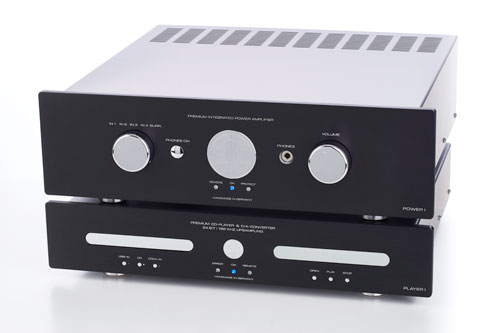Whereas my own work turns out to be a bit more strenuous when moving the quite heavy mono blocks from the photo studio into my listening room. However, these physical efforts quickly get rewarded when the first tones emerge from the still cold Accustic Arts monos: It is already audible that the monos will fit into my system seamlessly. There is no irritation, no irregularity. After all, this cannot be taken for granted, as all the components within my system, including a wide range of accessories, have been matched and harmonized for years. Before finally comparing them to my normally used power amplifiers, the Accustic Arts very much pleased my life for quite some time. They perform in such a right and familiar way, that I, without having to think about it, rely on them when testing the Aqvox Detoxer. On one hand, they set to work with high resolution, which makes working with them an extraordinary experience, and on the other hand, they act so harmoniously and homogeneously, that one wants to listen to them for mere pleasure. In the course of time, a further noteworthy detail comes to my mind: the monos real have a good grip on the woofers of the Kawero!, which must in no way lead to the impression of a somewhat more slender bass foundation. On the contrary! The Mono II combines the best of both worlds: lots of energy and precise control.

I must say that I already forgot about the fact, that the Accustic Arts monos had been responsible for my chain’s powerful performance, when I played Helmut Baumgartner a few recently rediscovered rock songs before he addressed his studio work. However, the amplifiers delighted him much more than the harsh, barely audiophile rock sounds – and that for a reason that seemed to have lost my attention because of the successful integration of those monos in my system: The ones from Accustic Arts are different from the Ayons with their nominal 150 watts or from Einsteins The Poweramp with its 140 watts, both into 4 ohms, being comparatively true power packs with their 500 watts at 4 ohms. In practice, however, when increasing the power rating of solid-state power amps, it at the same time gets increasingly difficult to have them sounding smooth and harmonious also in the high-frequencies, wherefore Helmut Baumgartner got extremely positively surprised by the finely resolved, yet entirely stress-free and enjoyable high-frequencies, in light of the Mono II’s interior with its twelve power transistors and the mighty toroidal mains transformer. I like to admit that I headed for the Mono IIs without any expectation – or should I better write: quite naive? Having heard my colleague’s comment, I suddenly had to think back with frights to the review of the gorgeous Göbel Epoque Fine, whose impedance drop put the Brinkmann monos used for amplification at that time out of range. The replacement amps, which were then hastily cobbled together to complete the pending final sonic impressions, were probably the strongest and most expensive amplifiers that ever found their way into my listening room. They had an easy play with the Epoque, but by no means they were able to reach the musicality of the stressed Brinkmanns. Since then, I nurtured a certain skepticism about extremly powerful amplifiers in general. The Mono IIs, however, I gave a listen even before I occupied myself with their technical specifications. They simply sound like extraordinary delicate power amplifiers paired with a moderate power rating – despite their specs showing those impressive 500 watts. Awesome!

Before starting the comparison with The Poweramp, I take care in putting up the best possible working conditions for the Accustic Arts monos: Since they source their power, like all other power amps in my listening room, through the tried and tested power cables from Swisscables Reference Plus there is no other field of play left than to improve the positioning on the floor. At present, the Harmonix Beau Tone Million (TU-666M) rank as my favorites. Up to now, they have managed to lift all used power amps to great sonic heights. But one of the two sets that I have in my possession, I use under the Kawero! Classic, so I switch to the second best in my list of favorites, the Beau Tone (TU-666ZX). While the Mono IIs are placed directly on the tiled floor, Arild Anderson's "If You Look" from the album If You Look Far Enough enthuses with richly colored percussion instruments, powerful kettledrums and perilous sounding electronic sounds. The Hamonix feet, though, help them to a much wider and somewhat deeper virtual soundstage. The distinction between the smaller bells, bigger bells and rattles now works out even better: The instruments seem to be playing in the room, the speakers vanish and cannot be located anymore. Truly good!





























 |
|




































































































